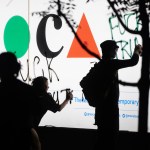Saturday, March 2, through Sunday, June 9
Figge Art Museum, 225 West Second Street, Davenport IA
With the exhibit’s artist known for his large public murals using the latest in equipment, materials, and technique, as well as for being one of the most famous of the “Mexican muralists,” Revolutionary Artist: The Prison Fantasies of David Alfaro Siqueiros will be on display at Davenport’s Figge Art Museum from March 2 through June 9, this lithograph series on loan from the Deere & Company collection for an intimate exhibition on view in the Lewis Gallery.
A social-realist painter who lived from 1896 to 1974, Siqueiros founded the modern school of Mexican mural painting alongside his contemporaries Diego Rivera and José Clemente Orozco. Siqueiros passionately lived his belief that art had the power to revolutionize society. In Revolutionary Artist: The Prison Fantasies of David Alfaro Siqueiros, this suite of six lithographic prints shows its creator’s work at its most expressive, incorporating the loose blurred brushwork he developed while studying with Jackson Pollock in New York. Having been jailed multiple times due to his labor-union work and revolutionary political activities, these late works by Siqueiros visually translate incarceration’s emotional toll. The exhibition will explore Siqueiros’s tumultuous political and artistic life, and included in the exhibit are works on paper from the Figge’s permanent collection by Siqueiros’ revolutionary artist friends and contemporaries Diego Rivera, Rufino Tamayo, and Elizabeth Catlett.
As a muralist and an artist, Siqueiros believed art should be public, educational, and ideological. He painted mostly murals and other portraits of the revolution – its goals, its past, and the current oppression of the working classes. Because he was painting a story of human struggle to overcome authoritarianism, capitalist rule, he painted the everyday people ideally involved in this struggle. Though his pieces sometimes include landscapes or figures of Mexican history and mythology, these elements often appear as mere accessories to the story of a revolutionary hero or heroes. His interest in the human form developed at the Academy in Mexico City, while his accentuation of the angles of the body, its muscles and joints, can be seen throughout his career in his portrayal of the strong revolutionary body. In addition, many works, especially in the 1930s, prominently feature hands, which could be interpreted as another heroic symbol of proletarian strength through work.
Revolutionary Artist: The Prison Fantasies of David Alfaro Siqueiros will be on display March 2 through June 9, with regular museum hours 10 a.m. to 5 p.m. on Tuesdays through Saturdays (10 a.m. to 9 p.m. on Thursdays) and noon to 5 p.m. on Sundays. Museum admission is $4-10, and more information is available by calling (563)326-7804 and visiting FiggeArtMuseum.org.
This post was originally published on this site be sure to check out more of their content.




